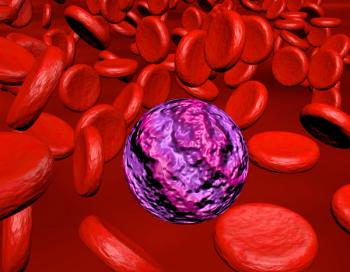
- Oncology Vol 28 No 4_Suppl_1
- Volume 28
- Issue 4_Suppl_1
(S042) Changing Practice Patterns for Breast Cancer Radiotherapy With Clinical Pathways: An Analysis of Hypofractionation in a Large Integrated Cancer Center Network
Hypofractionated whole-breast irradiation (HF-WBI) following breast-conserving surgery has produced excellent outcomes, but utilization remains limited. We evaluated the impact of a clinical pathway on adoption of HF-WBI in a large integrated radiation oncology network.
Malolan S. Rajagopalan, MD, John C. Flickinger, MD, Sushil Beriwal, MD, Dwight E. Heron, MD, FACRO, FACR; University of Pittsburgh Cancer Institute
Purpose: Hypofractionated whole-breast irradiation (HF-WBI) following breast-conserving surgery has produced excellent outcomes, but utilization remains limited. We evaluated the impact of a clinical pathway on adoption of HF-WBI in a large integrated radiation oncology network.
Methods: We identified patients aged ≥ 70 years treated for breast cancer or ductal carcinoma in situ (DCIS). Excluded patients were those treated with palliative intent; accelerated partial breast radiation following mastectomy; or with axillary, supraclavicular, or internal mammary fields HF-WBI was defined as ≤ 20 fractions with a dose/fraction ≥ 2.5 Gy. Multivariate analysis identified variables associated with increased HF-WBI utilization.
Results: We identified 2,426 patients meeting the inclusion criteria. HF-WBI utilization increased from 6.5% before pathway modification to 33.8% afterwards (P < .001). For academic physicians, the odds of utilizing HF-WBI increased 4.1 times following publication of the seminal HF-WBI trial and an additional 3.2 times following pathway modification (P < .001 and P = .001, respectively). For community physicians, the odds of HF-WBI did not change following publication but increased 20 times following pathway modification (P < .001). The increased adoption of HF-WBI saves $377,000 annually in our network and $51 million annually if extrapolated nationally.
Conclusions: We found that our implementation of clinical pathways dramatically increased adoption of HF-WBI for breast cancer in a large integrated cancer network. We found no significant change in utilization of HF-WBI among community physicians following publication of a seminal trial for HF-WBI until after clinical pathway implementation, which led to a 20-fold increase. Clinical pathways can be highly effective in changing practice patterns, disseminating evidence, and realizing health care savings.
Proceedings of the 96th Annual Meeting of the American Radium Society -
Articles in this issue
Newsletter
Stay up to date on recent advances in the multidisciplinary approach to cancer.


















































































